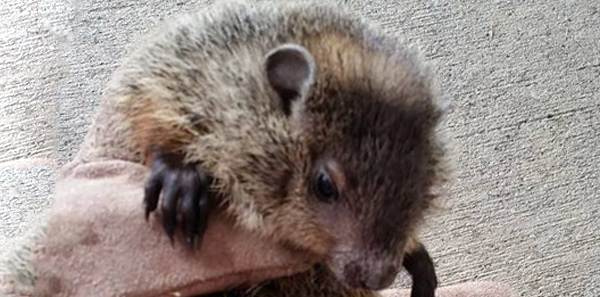- info@wildlife-removal.com
Call us for help in your town
Wildlife Removal Education
What to Do If You Find a Nest of Baby Groundhogs
Need groundhog removal in your hometown? We service over 500 USA locations! Click here to hire us in your town and check prices - updated for year 2020.
Groundhogs are often considered to be a pest animal, but most people who find a nest of cute animals will want to try and help the animals if it is not on their property and not causing them any issues. There are several different factors to consider when you are looking at the next steps that you should take, but the first thing to do is to back off to a safe distance so that you can analyze the situation. The animals may need help, but if you act too soon you can often do more harm than good.

Identify If An Adult Groundhog Is Nearby
The best chance for the baby groundhogs to survive is if they are reunited with their mother, so while monitoring the situation try to see if there is any signs that the baby has been genuinely orphaned, and see if the mother returns to the nest, as she may just be out foraging. It is also worth staying well away, as groundhogs can be quite defensive if they see someone interfering with their babies, and they can deliver a nasty bite that will make you think twice about getting too close again.
Removing The Baby Groundhogs
Having monitored the area for some time, if you still do not see the mother returning or there are clear signs the mother has died, then place a warm hot water bottle covered in a soft towel in the bottom of a box, and move the babies in to the box. Depending on how old and active the babies are, you may need to place a lid on the box to stop them from climbing out.
Finding A Wildlife Rehabilitator
There are lists of rehabilitators that can be found on websites or can be provided through your local veterinary surgery, and you should try to contact these as soon as possible. The quicker that you can get the animals to the rehabilitator, the better the chance the animals will have of survival.
Transporting The Baby Groundhogs To The Rehabilitator
You can use the same box that you used to remove the groundhogs to transport them, and placing a freshly warmed hot water bottle wrapped in a towel in the bottom will help to keep the baby groundhogs warm. If you are going to be slow in terms of transporting the animals, it is worth asking for some guidance on rehydrating the babies from the rehabilitator.
Go back to the Groundhog Removal page.


















